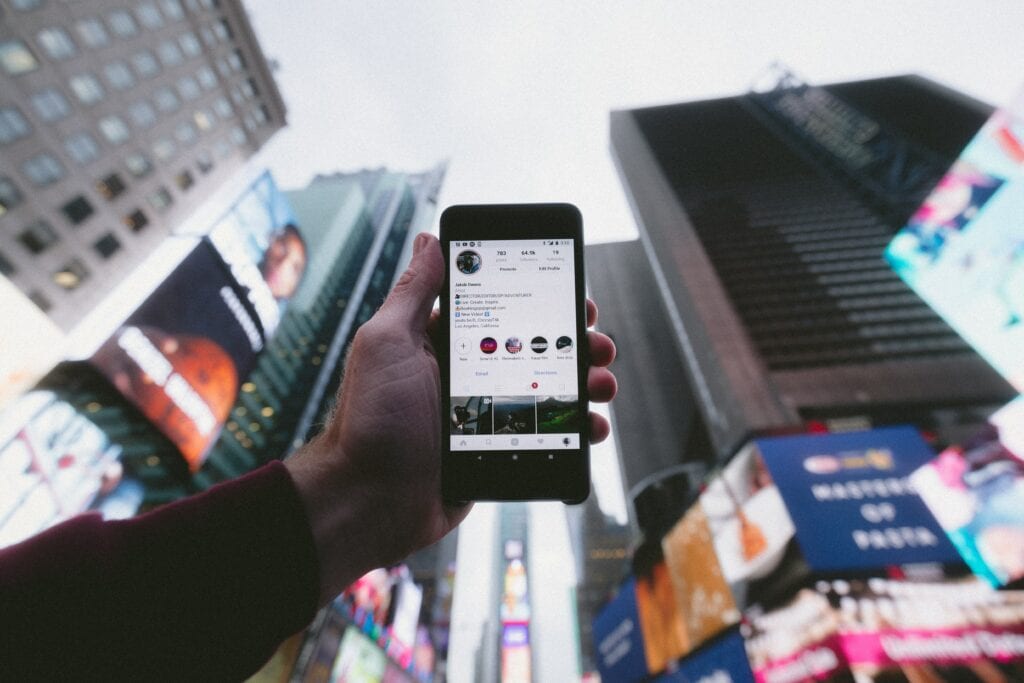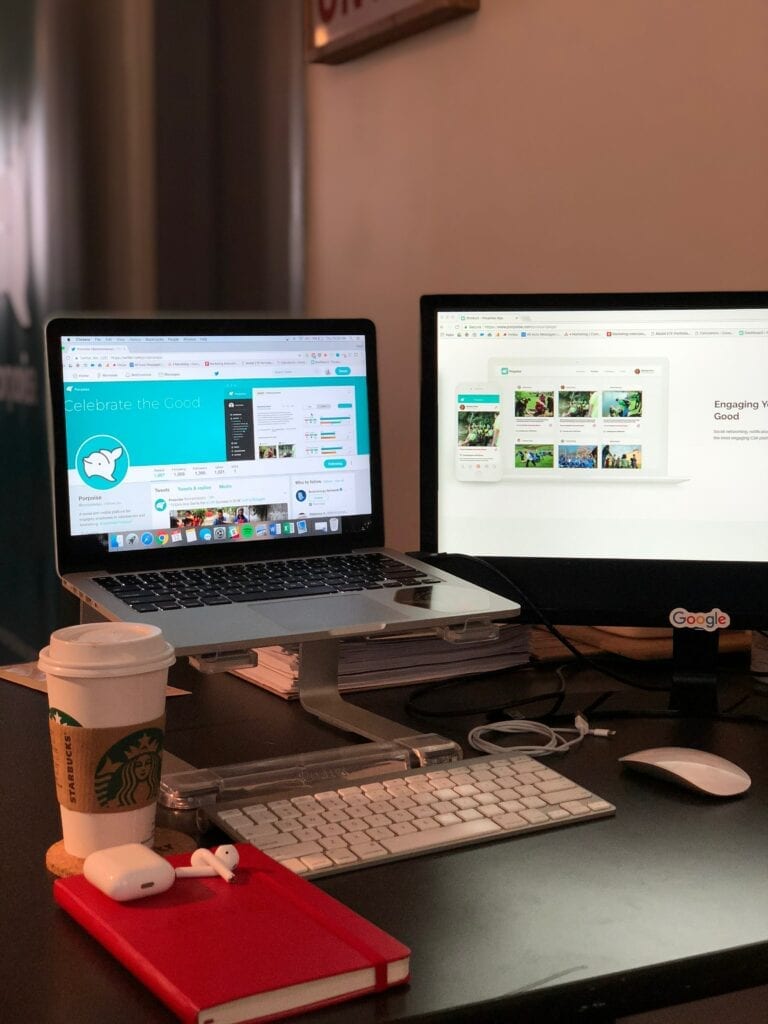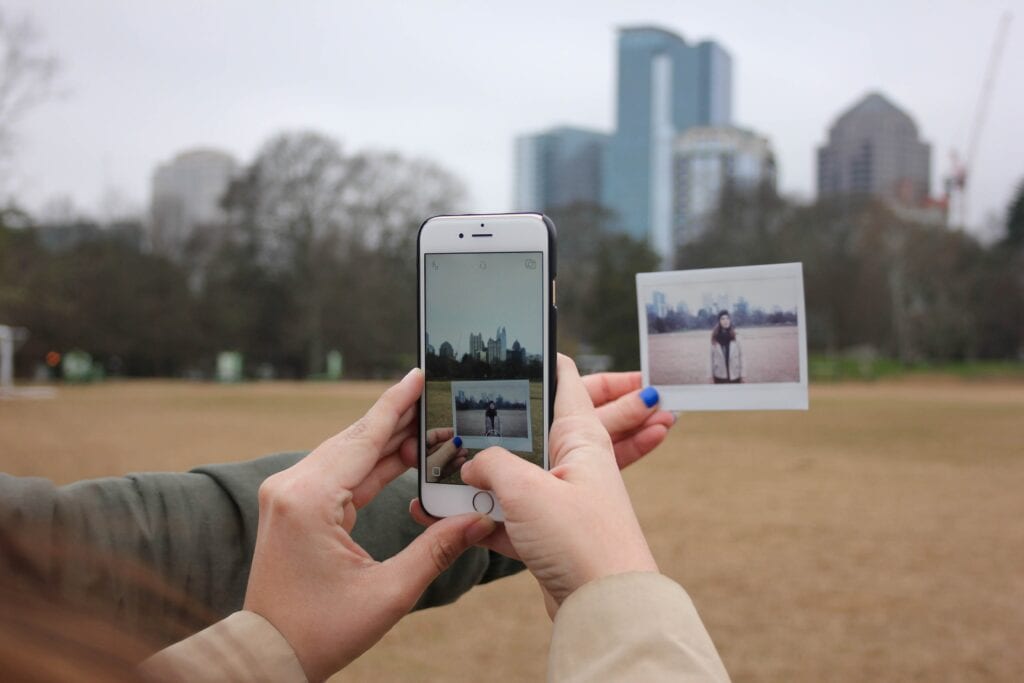When you first started using social media, you might have just considered it a useful way to share photos with family and friends and keep up to date with what’s happening back home. While social media is certainly useful for these purposes, for a digital nomad, social media can do so much more.
When you are looking for new opportunities and connections in a new place, social media can be a great door opener. Whether you are looking for local community groups as a way to make new friends in a new city, or you are looking for professional opportunities anywhere in the world, social media can often act as a hub for finding and engaging.
But this means that your social media profile and how you present yourself online is more important than ever.
We all know that first impressions matter, and if you are engaging online, your first opportunity to make an impression may be with your social media profile. Moreover, if you are working remotely and potential employers or partners don’t have the opportunity to get to know you face to face, they will probably look at your social media to get an idea of who you are as a person, again forming an impression of you based on your online profile.
In addition, if you dream of leveraging your digital nomad status and your freedom to travel as a business or side business, your social media will be vital. It will be an essential tool if you are looking to find and engage clients or drum up traffic for your website. You may even be able to monetize your social media accounts.
Whatever your goals, it is clear that as a digital nomad, it would be foolish to overlook the potential benefits that a good social media presence can provide, or to underestimate the damage that a bad social media presence can reap.
Don’t believe me? Check out this list of nine times someone lost a professional opportunity as a result of poorly thought through social media activity.
Using social media well is an art and depends greatly on what exactly you want to achieve. But we have put together a list of best principles to get your started if you are not already leveraging your social media presence as a digital nomad.
We will cover the essentials for crafting and growing your social media profile. After that, it is all about following your instincts and engaging your creativity.
1. Renovate Your Social Media Presence

Regardless of whether you want to build an active social media following, or you just want to make a good first impression when people find you online, your first step should be to fully review your social media presence.
This matters because when someone searches for you online, they want to be able to find a consistent picture of you. They also want to see that your accounts are up to date, because this is a clear sign that you are professionally active.
This is also essential as an opportunity to delete any questionable content that you may have on any of your profiles. While an innocent comment might have seemed funny at the time, it is not uncommon for old content to be dug up and used as a sign of poor character. You might lose opportunities as potential collaborators don’t want to risk the association.
Because social media is time consuming, you should choose the platforms that are most important for the areas that you are active in. If you are a website designer, this might be LinkedIn and Twitter. If you are a travel writer, it is probably Instagram and Facebook.
Delete your other accounts so that they aren’t compromising your presence and you don’t have to update them.
If you do have personal accounts that you want to maintain but that aren’t part of your public profile, make sure that they are completely private. For example, perhaps you use Instagram to post your professional photography, while you use Facebook to maintain witty banter with your friends back home. Your Facebook should be private.
2. Identify Your Brand

Attention spans are short, so when someone finds you online, you want them to understand what you are all about pretty much at a glance. This means having a strong brand that immediately speaks to your priorities.
For this, you need a focus. Developing an online brand that covers you as a programmer, designer, world traveller, gardener, surfer, and master chef will be challenging.
You want to decide which of these in the most important and prioritize them in terms of how you craft your profile and what kind of content you post. That doesn’t mean that you can never post images of that amazing cake that you baked or a film of you catching the perfect wave. These add personality to your profile that make you seem approachable and interesting. But 80 percent of your content should be “on message”.
Identifying your key personal brand values will also help you determine which social networks to focus on when you renovate your accounts. But don’t forget to also do you research into how the platforms that you think you want to use actually work.
While you might not need to be an expert in all their algorithms, you do need to know the basics. For example, on Instagram, you need to know that you can’t share links unless you have more than 10,000 followers.
This means that while Instagram might be the most popular social media platform for photographers, it is difficult to use it to drive website traffic. If this is important to you, you will need to investigate other platforms, consider other strategies for engagement, and maybe prioritize hitting those 10,000 followers as quickly as possible.
3. Build Your Network

The whole point of social media is that it is social. While it is great for publicizing and showcasing, what really makes it work is the social element.
This holds true no matter how you want to use social media. If you are looking to build personal connections, business connections, or showcase your work to find new clients, you need to be speaking to people and putting your voice where others will hear it.
The key to doing this is to discover where the people you want to engage with are active and get active there as well. So do your research.
Looks for groups that you can join that are related to your interests and contain the type of people that you want to engage with.
Look for relevant hashtags. Follow them to see what is going on, and use them. A lot of people follow the hashtags that they are interested in, so they will see your content even if they don’t know you, and you have the opportunity to make new connections.
Finally engage with people, commenting on their content, sharing, and messaging direct if you have something relevant to say. The fact is that a lot of people may look at your content and enjoy it, but do nothing to reach out. But if you engage with their content, they will want to engage with you.
Long story short, while creating good content is important, engaging with others is what builds your network.
4. Make It Easy

Renovating your social media profile will probably feel like a big task, but maintaining it and building it will also be time consuming.
This is true even if you aren’t looking to build a giant following. People’s feeds are full, so if you aren’t posting regularly, people aren’t seeing you.
You might not think that is important if you just want to maintain a presence for when people search for you. But how engaged other people are with your content will also influence how you are perceived. For example, what perception could a potential employer or client have if your last LinkedIn post has no engagement, versus 50 likes and a thriving debate underneath.
How regularly you need to post content depends on the platform that you are using. If you are using platforms such as Facebook or Instagram, you want to be posting 3 to 5 times a week, and a maximum of once a day. If you post more than once a day, people tend to become fatigued with your account and stop following you.
With a platform liked LinkedIn, you can maintain your profile posting just once a week. If you want to be active on Twitter, you will be better off posting 2 or 3 times a day.
Of course, if you are posting to more than one platform, that increases the amount of work involved. And while we are a fan of the “create once, use everywhere mentality”, we don’t recommend doing things like having your Instagram post directly to your Facebook. If you do this, you lose opportunities for tagging and optimizing content for the different communities that are active on the different platforms.
This is where management tools come in, such as Sprout, Buffer, and Hootsuite.
These platforms let you schedule your content, so you can have a dedicated social media block during your week rather than having to develop and post content on the fly. It is also useful for sharing content across platforms, as you can copy content from one platform to another, and then adjust and optimize the content for the new platform.
These platforms can also help you with your engagement. You probably have a full feed arriving, which means that it can be easy to miss content from the people that you are most interested in, or you need to scroll past a lot of content before you get to those.
These platforms let you create sub-lists, so you can log in and engage with the people that are most important to you on a regular schedule. You are then free to scroll your complete feed and see what else is out there when you have time.
These platforms also have built in functionality to let you see basic analytics. While you will probably want something more sophisticated if you are keen on measuring and demonstrating your impact, if you just want to get to grips with what type of content is most successful and the best times of day to post, you can get that with these tools.
Professionalize Your Social Media

If you still think of social media as something that you scroll through while not paying attention to whatever you are watching on Netflix, you are not alone, but you are missing out on a big opportunity.
As a digital nomad, your online presence, which is increasingly reliant on your social media profiles, could be the first impression that you make with a lot of new connections, both personal and professional. You want it to reflect the best of you.
Social media is also an opportunity to actively seek new contacts and raise your profile within your fields of interest. You may even be able to monetize some of your social media overtime if you find that there is a lot of interest in you and what you do.












